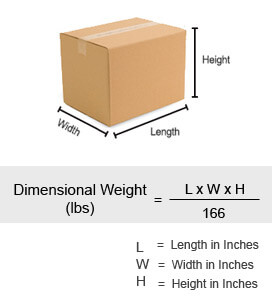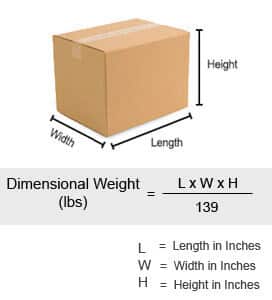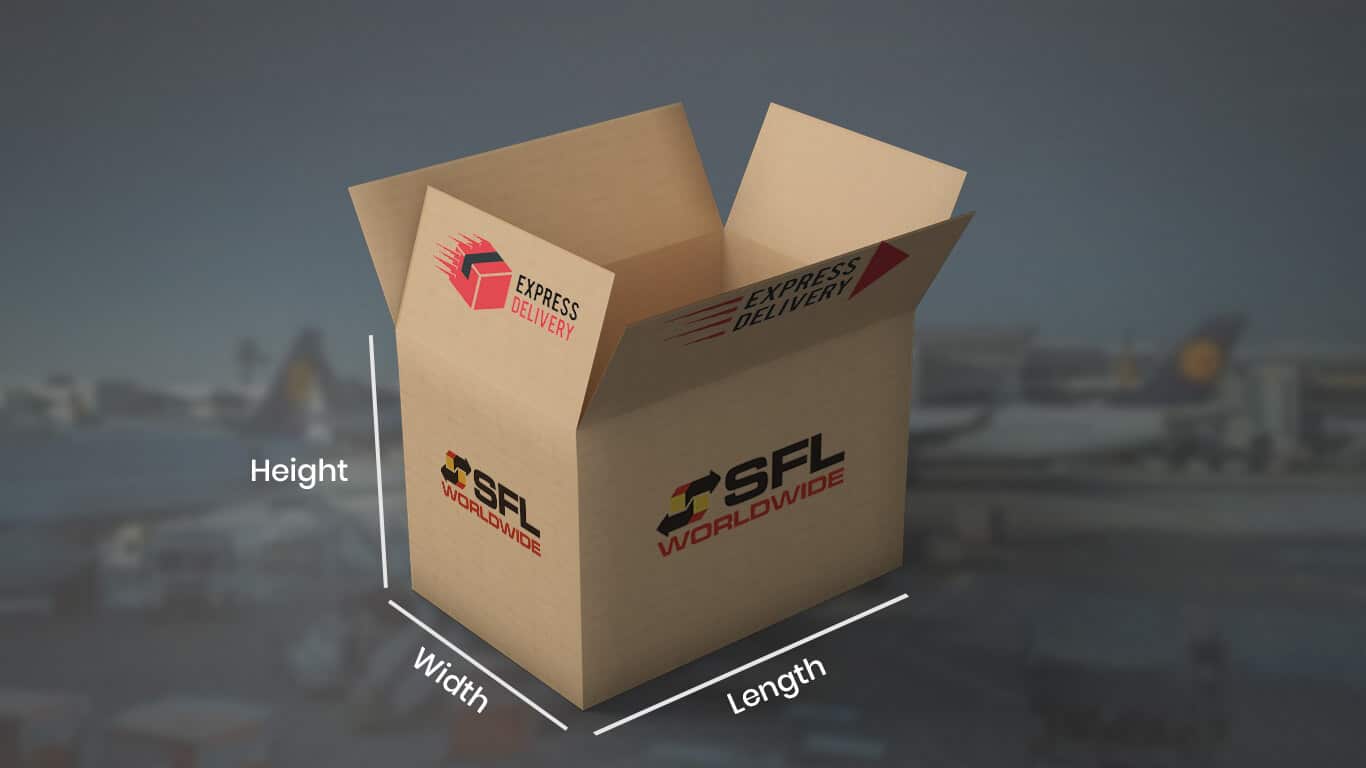When it comes to shipping packages, it’s not just the actual weight that matters. Shipping carriers also take into account the size of the package to determine the dimensional weight (DIM weight). This means that if you are shipping a lightweight item that takes up a lot of space, you may be charged based on its dimensional weight rather than its actual weight.
Understanding Dimensional Weight
Dimensional weight is a calculation used by shipping carriers to determine the cost of shipping a package. It takes into account the package’s size and weight, and whichever value is higher will be used to calculate the shipping cost.
The reason for this is that shipping carriers have to consider the amount of space that a package takes up in their delivery trucks and planes. If they were to charge based solely on the actual weight, it would be unfair to customers who are shipping lightweight items that take up a lot of space. Dimensional weight ensures that the cost of shipping is based on the space that a package takes up rather than just its weight.
How to Calculate DIM Weight
Calculating the dimensional weight of a package is a relatively straightforward process. Most shipping carriers use the same formula, which is:
DIM weight = (Length x Width x Height) / Dimensional Factor


A dimensional factor is a number set by the shipping carrier, and it represents the amount of space a package takes up in relation to its weight. Different carriers may have different dimensional factors, so it’s essential to check with your specific carrier to ensure you are using the correct factor.
To calculate the dimensional weight, you will need to measure the package’s dimensions in inches and then multiply them together to get the cubic inches. Once you have the cubic inches, divide that number by the dimensional factor to get the dimensional weight.
For example, let’s say you are shipping a package that measures 12 inches by 10 inches by 8 inches, and your carrier has a dimensional factor of 166. The calculation would be:
DIM weight = (12 x 10 x 8) / 166
DIM weight = 96 / 166
DIM weight = 0.58
In this example, the dimensional weight of the package is 0.58 pounds, which means that if the package weighs less than 0.58 pounds, you will be charged based on the dimensional weight rather than the actual weight.
Reducing DIM Weight
If you are looking to reduce your shipping costs, one way to do so is by reducing the dimensional weight of your packages. There are a few ways you can do this:
- Use Smaller Packaging: If you are shipping small items, consider using smaller packaging to reduce the amount of empty space in the package.
- Use Poly Mailers: Poly mailers are lightweight and take up less space than boxes, which can help reduce the dimensional weight of your packages.
- Use Bubble Wrap or Padded Mailers: Using bubble wrap or padded mailers can help protect your items while also reducing the amount of empty space in the package.
- Use Flat Rate Shipping: Many carriers offer flat-rate shipping, which can be an excellent option for heavier items that take up a lot of space.
It’s important to note that while reducing the dimensional weight of your packages can help lower your shipping costs, it’s essential to ensure that your items are still adequately protected during shipping. Using packing materials like bubble wrap or padded mailers can help keep your items safe while also reducing the dimensional weight of your package.
Shipping Carriers and DIM Weight
Most major shipping carriers, including UPS, FedEx, and USPS, use the dimensional weight to calculate shipping costs. Each carrier may have different dimensional factors, which can affect the calculation of dimensional weight.
It’s essential to check with your specific carrier to ensure you are using the correct dimensional factor when calculating the dimensional weight of your package. For example, FedEx uses a dimensional factor of 139 for domestic shipments, while UPS uses a dimensional factor of 139 for all shipments.
At SFL Worldwide, we aim to make the process of shipping simply by offering intuitive, easy-to-use calculators on our website. Here is our Dimensional Weight Calculator for your reference.
Some carriers also have different policies when it comes to back charges. Back charges are fees that are charged after the initial shipping cost due to an incorrect or inaccurate measurement of the package. If the actual weight of the package is higher than the estimated weight used to calculate the shipping cost, the carrier may charge a back charge to cover the additional cost.
It’s important to be accurate when measuring your packages to avoid back charges. Some carriers may also offer shipping insurance to cover the cost of back charges in case of an error.
International Shipments and DIM Weight
When shipping packages internationally, it’s important to understand the rules and regulations surrounding dimensional weight. Each country may have different regulations when it comes to shipping, including rules for the calculation of dimensional weight.
It’s essential to check with your specific carrier and the destination country to ensure you are following all regulations and calculating the dimensional weight correctly. For international shipments, you may also need to include additional documentation, such as customs forms or commercial invoices.
High Volume and Freight Shipments
For high-volume and freight shipments, dimensional weight can have a significant impact on shipping costs. These types of shipments typically take up a lot of space, and carriers may charge based on the dimensional weight rather than the actual weight.
Freight carriers typically use a different formula to calculate dimensional weight than parcel carriers. Freight carriers use what is called the cubic feet formula, which takes into account the height, width, and length of the shipment in feet rather than inches.
To calculate the cubic feet of a shipment, you will need to multiply the height, width, and length in feet together. Once you have the cubic feet, you can use the carrier’s dimensional factor to calculate the dimensional weight.
Shipping Costs and Logistics Companies
Shipping costs can be a significant expense for businesses, especially those that rely on logistics companies to handle their shipments. Logistics companies offer a range of services, including warehousing, inventory management, and shipping.
It’s essential to choose a logistics company that offers competitive shipping rates and understands the importance of calculating dimensional weight correctly. By choosing the right logistics company, you can help reduce your shipping costs and ensure that your packages arrive at their destination safely and on time.
Packing Materials and Shipping Carriers
Choosing the right packing materials can also help reduce the dimensional weight of your packages. Bubble wrap, padded mailers, and poly mailers are all lightweight and take up less space than boxes. Using these materials can help reduce the amount of empty space in your packages, which can help lower your shipping costs.
Different shipping carriers may also have specific rules and regulations when it comes to packing materials. For example, some carriers may require that packages be double-boxed to ensure that they are adequately protected during shipping.
Conclusion
In summary, dimensional weight is a calculation used by shipping carriers to determine the cost of shipping a package based on its size and weight. To calculate the dimensional weight, you will need to measure the package’s dimensions in inches and divide the cubic inches by the carrier’s dimensional factor.
Reducing the dimensional weight of your packages can help lower your shipping costs, and there are several ways to do so, including using smaller packaging, poly mailers, bubble wrap, and padded mailers. It’s important to be accurate when measuring your packages to avoid back charges and to follow all regulations when shipping internationally.
Different carriers may have different policies and regulations when it comes to dimensional weight, so it’s essential to check with your specific carrier to ensure you are following all rules and regulations. Choosing the right logistics company and packing materials can also help reduce shipping costs and ensure that your packages arrive at their destination safely.
Remember to choose a logistics company that offers competitive shipping rates and understands the importance of dimensional weight. By following the correct formula and using the right packing materials, you can help reduce your shipping costs and ensure that your packages arrive at their destination safely and on time.
Overall, understanding and calculating dimensional weight is an important part of the shipping process. By following the correct formula and using the right packing materials, you can help reduce your shipping costs and ensure that your packages arrive at their destination safely and on time.
Remember to check with your specific carrier and the destination country to ensure you are following all regulations and to choose a logistics company that offers competitive shipping rates and understands the importance of dimensional weight. With the right strategy and approach, you can make the most of your shipping budget and help your business thrive.

I’m Tammy Waller, a supply chain and logistics specialist with over 10 years of expertise. I’ve been an author and SFL employee for over 10 years.
As an author, I’ve been able to teach others. I love guiding users through supply chain and logistics operations.
I have substantial experience managing logistics operations, supply chain management, transportation, inventory management, and warehousing in shipping-moving and logistic services. I’ve worked on many worldwide logistics and supply chain projects, honing my abilities in negotiating rates, scheduling shipments, and managing vendors.




